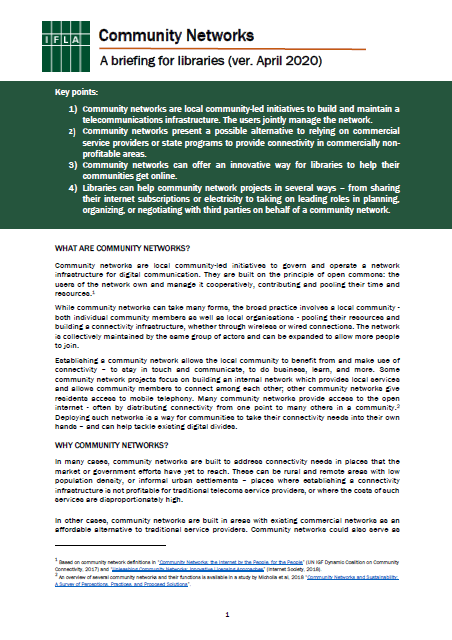Community Networks: A Briefing for Libraries
Ensuring equitable access to information and knowledge lies at the heart of the library mission. As part of this goal, many libraries offer public internet access and workstations. And yet, there are still areas where many people do not have an opportunity to get online. Community networks – local community-led initiatives to build and maintain a telecommunications infrastructure – are emerging as an alternative model to help connect the unconnected. How do such Community Network projects relate to libraries’ mission, what can libraries do to support these initiatives?
information and knowledge lies at the heart of the library mission. As part of this goal, many libraries offer public internet access and workstations. And yet, there are still areas where many people do not have an opportunity to get online. Community networks – local community-led initiatives to build and maintain a telecommunications infrastructure – are emerging as an alternative model to help connect the unconnected. How do such Community Network projects relate to libraries’ mission, what can libraries do to support these initiatives?
In recent years, more people have taken up Community Network initiatives to help bridge the digital divide. These are local community-led projects to build and jointly operate a digital communications infrastructure – often in areas where commercial networks are not available. These networks are built on the principle of open commons: the users of the network govern and manage it cooperatively, contributing their time and resources.
What does this mean for libraries? Supporting Community Network projects can be a fundamentally new way for libraries to help their communities get online. In the digital age, this aligns closely with libraries’ mission to help ensure equitable access to information and knowledge.
A new briefing prepared by IFLA explains this in more detail:
- What are Community Networks?
- Why are Community Networks important for libraries?
- How can libraries help and support community network projects?
- How have libraries helped community network projects in different parts of the world?
- What are the different ways a library can get involved?